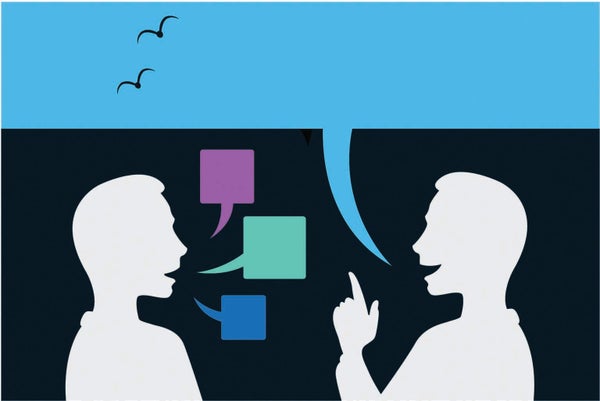Like the ancient Greek of Homer's time, the Tsimane' language has no set word for the parts of the color spectrum English speakers call “blue.” Although Tsimane' does name a number of more subjective hues (think “aquamarine” or “mauve” in English), its speakers—the Tsimane' people of Bolivia—reliably agree on just three main color categories: blackish, reddish and whitish.
But bilingualism is reworking the Tsimane' tricolor rainbow, researchers recently reported in Psychological Science—offering a rare, real-time glimpse into how learning a second language can change how people think about abstract concepts and fuel language evolution. The data show Tsimane' speakers who also speak Spanish are borrowing the concepts of—but not the Spanish words for—new color categories such as blue, green and yellow.
“You could have imagined that they could have just started calling things amarillo and azul” (the Spanish words for yellow and blue), says lead author Saima Malik-Moraleda, a cognitive neuroscientist at Harvard University and the Massachusetts Institute of Technology. But instead “they're repurposing their own Tsimane' color words.”
Malik-Moraleda and her colleagues asked 152 people who spoke Tsimane' or Spanish, or both, to name and sort a set of 84 differently colored chips. Bilingual participants sorted the colors into narrower categories in both languages. For example, to describe blue and green chips in Tsimane', they chose two hazy Tsimane' color terms, yushñus and shandyes, and repurposed them as distinct, consistent labels for their freshly acquired color concepts. But monolingual Tsimane' speakers used these words interchangeably for bluish and greenish colors.
These results add to the evidence that the languages we speak affect how we slice up the rainbow into color categories. The new study documented this effect in real time as a language evolved; other work in languages such as Greek and Welsh has relied on historical evidence to study this transition after the fact, says psycholinguist Panos Athanasopoulos of Lund University in Sweden. “What they're showing is the end process of this conceptual restructuring” associated with bilingualism, he says.
Although the results reflect changes in how bilingual people talk about the world, they do not reveal whether these speakers actually perceive colors differently than monolingual people do. Psycholinguistics evidence suggests the language we speak can subtly influence how our brains process what we see. Testing whether bilingual Tsimane' speakers' use of color terms reflects a difference in how they experience color—that is, whether their brains react to color differently than those of monolingual people—would be a fascinating follow-up, Athanasopoulos says.
“To me personally, I feel like it shows the beauty of language learning,” Malik-Moraleda says. Even without borrowing words, it can “transform your own concepts in your native language.”
